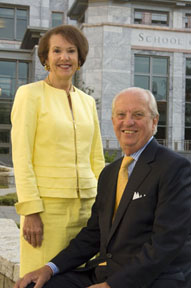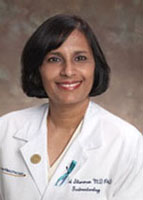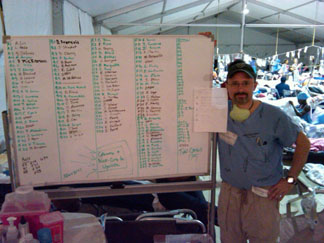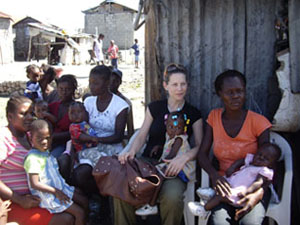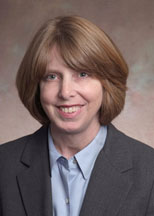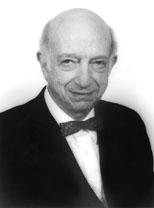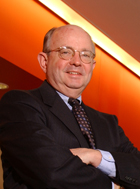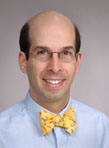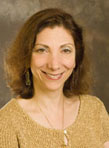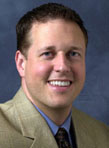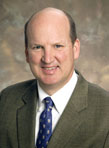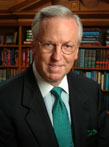 |
||||||||||||||||||||||||||||||||||||
April 2010 |
||||||||||||||||||||||||||||||||||||
VA enchances relationship with medical schoolsSecretary of Veterans Affairs Eric Shinseki recently released a report that will help strengthen the VA's relationship with medical schools to ensure it provides accessible, advanced care to the men and women who have served this nation in uniform. The report was released this past November by a blue-ribbon panel to advise the VA. I was part of that committee, which convened in 2006. I and other committee members made a series of recommendations, and two of those recommendations, in particular, will benefit Emory and other schools affiliated with the VA: * The VA will form a standing, federally chartered advisory committee to help the VA realize the full potential of its partnerships with health professional schools. This has never been done before in the more than 60 years the VA has had an affiliation with Emory and other schools. (General Omar Bradley, the administrator of the VA at the time, developed the partnership in 1946 to address a national shortage of physicians and the limited capability of the VA to meet the needs of veterans returning from World War II.) • The VA will streamline policies and procedures that impede effective collaboration with its academic affiliates in patient care, education, and research. For example, schools have been concerned over recent policy changes affecting information security and privacy, shared medical services contracting, conflict of interest, part-time physician time and attendance, and mandatory training. The VA will review and modify these policies and procedures. A solid partnership is vital to providing the best care possible to our country's veterans, who have increasing and ever-changing needs. The Atlanta VA Medical Center provides care for 60,000 veterans each year and is the largest, most complex tertiary care VA facility in the Southeast. This partnership also is critical to U.S. teaching programs, since about two-thirds of all physicians practicing in this country and almost all of our graduates here at Emory have had some of their professional education in a VA-affiliated institution. I have been involved with this relationship for a long time and will continue to keep you informed of any new developments.
Match Day
March 18 was Match Day at medical schools across the United States, including Emory's School of Medicine. Graduating medical students found out the name of the U.S. teaching hospital where they will do their residency. Emory students were matched with a variety of institutions, including Johns Hopkins Hospital, University of California at San Francisco Medical Center, Brigham & Women's Hospital, and Children's Hospital of Philadelphia. Thirty-eight students will remain at Emory for their residency. Of Emory's 125 graduating seniors, 120 participated in the National Residency Match Program. Two of the graduating students will pursue postdoctoral research, and three students chose to defer residency. The most popular specialties chosen by this class are internal medicine and pediatrics, followed by anesthesiology and general surgery. Watch the video of Emory's Match Day above, and access photos of the event.
Corrells receive Atlanta, international awards
I was not at all surprised that the Association of Fundraising Professionals (AFP) will honor Pete and Ada Lee Correll as the Outstanding Philanthropists of the Year at its 50th anniversary convention in Baltimore in April. (AFP has more than 300,000 members in 200 chapters globally.) This award follows AFP's greater Atlanta chapter selection of the Corrells as their philanthropists of the year. The Corrells received this award at the Georgia Aquarium at a reception celebrating National Philanthropy Day in November. The Correll name is synonymous with philanthropy at Emory. They have helped fund scholarships, endowed four professorships, and supported cardiovascular research at the SOM. Without Pete Correll, there would be no Grady, since his leadership helped keep it from bankruptcy. Ada Lee Correll serves as chair of the SOM committee on the university's capital campaign and on the university's board of visitors, and she has hosted fundraising gala events. But these are only a few examples. Their humanitarian efforts extend to working tirelessly for causes such as Boys & Girls Club, the Georgia Aquarium, UNICEF, and the United Way, to name a few. The Corrells have shared our vision, invested in our future, and become a vital part of our family here at Emory. We are extremely proud to have them at our side as we progress into a new generation of medical education and research, and we are especially glad they are getting the accolades they so richly deserve.
DeLong first Emory resident on JAMA board
The Journal of the American Medical Association holds a special place in medicine. Long heralded as a premier medical journal, its board of advisors is a who's who in medicine. Among this long-distinguished group, though, is a spot for a newbie. The JAMA board's resident position is held by Laura DeLong, an Emory dermatology resident. She is believed to be the first Emory resident to hold the post. "I try to bring the perspective of a resident to the journal, of a doctor in training today," says DeLong. "For example, JAMA was discussing becoming purely electronic, and since my generation gets most of its information online, I was in favor of the measure." That exchange happened at JAMA's editorial board meeting in May 2009. Before her three-year term ends in spring 2011, DeLong will attend two more meetings, along with two other Emory board members, Chancellor Michael M.E. Johns and former CDC director Julie Gerberding, now clinical professor of infectious disease in the School of Medicine. DeLong started her residency after completing a postdoctoral fellowship at Emory in dermatology outcomes research under Suephy Chen. She continues to review articles for the Archives of Dermatology and JAMA. Before coming to Emory, she was a surgery resident at the University of Maryland in Baltimore and earned a master's of public health at Johns Hopkins University. Though she made the change from surgery to dermatology, she is sure about pursuing a career in academic medicine. "I really like the environment, the union of clinic, education, and research," she says. Her research focuses on vitamin D and its relation to skin disease.
By pursuing a career in academic medicine, DeLong will follow in the footsteps of her parents, Emory neurologist Mahlon DeLong and Mary DeLong, the medical school's Assistant Dean for Postdoctoral Education.
Newsworthy medicine
The results are in: The class of 2011 (M3 students) voted the neurology module and the class of 2012 (M2 students) voted the gastrointestinal module as the best modules the two classes studied during the foundations phase of their training under the new curriculum. This phase occurs during the students' second year and is similar to the old curriculum's didactic phase preceding clerkships. The SOM Students' Association presented the first ever Awards for Excellence in Teaching to the modules’ directors, Jaffar Khan, Assistant Professor of Neurology, for the best module of 2008, and Shanthi Sitaraman, Professor of Medicine (digestive diseases), for the best module of 2009. They received their awards on Residency Day Part I in December. (Part II was on Feb. 27, when the students met the residency director to learn about programs offered.) Khan and Sitaraman were awarded trophies, and their names will be placed on a plaque in the SOM building. "The neurology module you presented in 2008 was overwhelmingly popular," say Howard Chiou and Griffin Baum, who presented the award on behalf of the class of 2011. "This award represents an opportunity for the class to thank you for a memorable and well-crafted module that inspired our intellectual curiosity in neurology."
Sitaraman, Shanthi Srinivasan, Assistant Professor of Medicine, and Frank Anania, Director of Hepatology, developed the GI module. "Our goal was to teach the students the basic principles of the gastrointestinal system as well as practical clinical steps to manage patients," says Sitaraman. They added several new components to the module, including curriculum review games of Jeopardy and Family Feud and one-on-one oral exams based on clinical vignettes the students particularly enjoyed. As one student in the class of 2012 put it, "You made me love guts!"
SOM efforts in HaitiI wanted to thank faculty, staff, students, and trainees again for all their efforts to help the people of Haiti. Many of you have donated financially to organizations working in Haiti, and some faculty have traveled to Haiti to treat the injured. I wanted to share a few of their pictures and stories.
Neurosurgeon Nick Boulis packed his personal OR tools and electric drill in a footlocker, along with mosquito nets and flashlights, and hopped on a plane in Fort Pierce, Fla. The flight was organized by Missionary Flights International (MFI). "I flew on a prop plane that had been loaned to MFI by NASCAR," Boulis says. "On arrival, I went to a suburb of Petionville, but the doctor with whom I had intended to work was leaving. I returned to the city and wandered into a field hospital run by Medishare and the University of Miami. They ran my credentials, and that night I began working. By the following morning, we were doing our first brain surgery on a young boy. "We slept in a large communal tent. The showers worked on two of the eight days that I was there. We were eating mostly ready-to-eat military meals. The high turnover of medical professionals created huge shifts in expertise. By my fifth day there, I found myself operating as the chief medical officer. When not doing neurosurgery or consults, I worked in the ER, did wound care, assisted in ortho and general surgery, and worked in the supply tent. I can honestly say that it was one of the most emotionally challenging, yet most valuable experiences of my life. I continue to feel guilty that I left but can justify it because I am working hard to procure a portable CT scanner and a stable rotation of neurosurgeons for the hospital." Mark Fenig, an Emergency Medicine resident, worked in a compound in Jimani, a city just over the Haitian border in the Dominican Republic. Despite the presence of more than 70 doctors, nurses, and volunteers, there was an endless amount of work, he says. On day three, he was in charge of 60 patients in cramped quarters. When he had to leave, he trained his interpreter to be a medical assistant to run a "mini-med" clinic he had set up. "He was a fast learner, and by the end of the hour, he was doing patient intakes, including vital signs and urinalysis," Fenig says.
Gynecologist and obstetrician Eva Lathrop traveled to Petit Anse in northern Haiti. She's worked in Haiti for several years with the NGO Konbit Sante on reproductive health programs, After the earthquake, the NGO addressed food, shelter, and security needs. "A second part of the trip was to help support our existing programs in the wake of the catastrophe to make sure all of the strides we have made are not lost completely as all of the aid and focus shifts to Port-au-Prince," Lathrop says. To keep abreast of Haiti-related information and requested services, the Office of Critical Event Preparedness and Response, headed by Alex Isakov of Emergency Medicine, is serving as Emory's clearinghouse. The Association of American Medical Colleges also lists volunteer opportunities and guidelines, as well as a list of nonprofit organizations accepting donations.
Save the date
Kathy Griendling, Professor and Vice Chair for Faculty Development in the Department of Medicine, is the recipient of the 2010 Dean's Distinguished Faculty Lecture and Award. She will give her lecture on June 15 at 5:30 p.m. in Room 120 in the Williams Medical Education Building. Griendling is a leading scientist in vascular biology. She and her colleagues cloned the angiotensin II receptor, which led to the development of targeted antihypertensive drugs. Currently, her work centers on the role of reactive oxygen species in smooth muscle proliferation, migration, and differentiation and the role of oxidative stress in the pathogenesis of vascular disease. Her work is widely recognized as groundbreaking; four of her papers have been cited more than 1,000 times each. In 2004, the American Heart Association awarded her its Basic Research Prize, one of the most prestigious awards in American medicine. She has also served on numerous national and institutional committees, study sections, and editorial boards.
The passing of a great Emory medicine alum
The School of Medicine lost a great friend and colleague in March. Arnall Patz 43C 45M, whose pioneering research prevented blindness in countless premature babies, died on March 11. He was 89. He was revered for his discovery that exposing premature infants to high doses of oxygen could cause blindness. The oxygen, he found, destroyed the eyes' arteries, causing an overgrowth of blood vessels that permanently damaged the retina. At the time, about two-thirds of the total cases of childhood blindness were caused by an overgrowth of blood vessels. Patz's belief that the oxygen could cause damage was considered a dangerous idea in the late 1940s. He had to borrow money from his brother to run a study after the NIH turned him down. The study's results confirmed his belief, and Patz was able to design a larger trial involving 18 hospitals. It was the first controlled trial in ophthalmology, and its data changed the course of treatment for premature babies. The number of blind children in the United States immediately dropped by 60%. For this work, Patz earned numerous awards, and in 2007, the School of Medicine inaugurated a lifetime achievement award in Patz's honor. The recipients of the Arnall Patz Lifetime Achievement Award are selected by committee and are chosen for their accomplishments in medicine, significant contributions to medical research, or exceptional commitment and dedication to the medical school. The award is given each fall during alumni weekend. Patz was a long-time member of the Johns Hopkins medical faculty and director of Hopkins' Wilmer Eye Institute before his retirement.
Spotlight on biomedical engineering
Despite its youth, the 20-year-old field of biomedical engineering is the fastest growing engineering academic program today. The joint Wallace H. Coulter Department of Biomedical Engineering at Georgia Tech and Emory, with Larry McIntire as chair, has emerged on the forefront of biotechnology-related research and education. "By integrating the fields of life sciences with engineering," McIntire explains, "we can better understand the mechanisms of disease and develop new ways to diagnose and treat medical problems. We are working collaboratively in the fields of biomedical nanotechnology, predictive health, regenerative medicine, and health care robotics, among others. In addition, our new partnership with Peking University opens a wealth of opportunities for more research collaboration on a global scale." A few recent advances from the department include the following: • Ravi Bellamkonda, BME professor, and colleagues, in collaboration with Bob McKeon, Associate Professor of Cell Biology, recently developed an improved version of an enzyme that "digests" the dense scar tissue that forms when the central nervous system is damaged. He was the lead author of a paper published in the Nov. 2 issue of the Proceedings of the National Academy of Sciences. "These results bring us a step closer to repairing spinal cord injuries, which require multiple steps, including minimizing the extent of secondary injury, bridging the lesion, overcoming inhibition due to scarring, and stimulating nerve growth," Bellamkonda says. The research, which was supported by the NIH, eliminated the thermal sensitivity of the enzyme, chABC, used to treat patients and provided a bioengineered drug delivery system that allowed the enzyme to be active for weeks without implanted catheters and pumps. In collaboration with radiology researchers, Bellamkonda's lab also is developing imaging nanoprobes for non-invasively probing the leakiness of tumor blood vessels and predicting the efficacy of chemotherapy on breast tumors. This research was published in the February issue of Radiology. • Ajit Yoganathan, Matthew Paden (pediatrics), and James Fortenberry (pediatrics) are developing a new kidney replacement device specifically designed for children. The NIH awarded the researchers a $1 million challenge grant to refine a prototype device. The device will be useful for children who require dialysis but have to use adult-sized equipment because there currently are no FDA-approved child-sized devices available on the market. • Michael Davis, Niren Murthy, and grad student Jay Sy have developed tiny polymer beads that can slowly release anti-inflammatory drugs and break down into nontoxic components. The BME researchers found that when injected into rats' hearts after a simulated heart attack, the drug-embedded microparticles reduced inflammation. Injecting the particles could cut scar tissue formed after heart attack in half and boost the ability of the heart to pump blood by 10% weeks later. The research was published in Oct./Nov. Nature Materials. Davis and Murthy have published additional papers in Biomaterials and other top journals on the delivery of proteins and siRNA therapeutics for cardiac and liver disease. • Xiaoping Hu, Director of Emory's Biomedical Imaging Center, has found a simple way to make mammalian cells have a magnetic signature. Mammalian cells can produce tiny magnetic nuggets after the introduction of a single gene from bacteria. The gene MagA could become a valuable tool for tracking cells' movement through the body via magnetic resonance imaging. Hu's research was published in the June issue of Magnetic Resonance in Medicine.
Recent awards and honors
Sarah Berga (chair, gynecology and obstetrics) was elected president-nominee of the Society for Gynecologic Investigation. The society was formed in 1953 and has more than 1,200 members from 34 countries. Berga will serve as president in 2012. The American Society for Microbiology (ASM) named Jasmine Rainey Clark as the 2009–2012 award recipient of the ASM Robert D. Watkins Graduate Research Fellowship. She will receive an annual stipend to conduct her research, "Examining the assembly and intracellular transport." Her mentor is Eric Hunter (pathology). Larry Greenbaum (pediatrics), Chief of Nephrology at Children's Healthcare of Atlanta at Egleston and Chief of Pediatric Nephrology at Emory, was recently elected to the Council of the American Society of Pediatric Nephrology (ASPN). Greenbaum is the first physician from Georgia to serve on the 10-person ASPN council and will serve until June 2013. Timothy Johnson 10M was one of 30 people to receive the American Medical Association Foundation's 2010 Leadership Award. The award provides medical students, residents/fellows, and junior physicians with special training to develop their skills as future leaders. Johnson is one of only 20 medical students to have received the award. He will be an ophthalmology resident at the Medical Center of Columbus (Ga.) and then at Thomas Jefferson University. Nadine Kaslow (psychiatry and behavioral sciences) was appointed editor of the Journal of Family Psychology, a nationally known research journal affiliated with the American Psychological Association. Allan Kirk (surgery and pediatrics) has been named the new editor-in-chief of the American Journal of Transplantation. His new appointment as the editor of the country's leading transplant journal will begin in September. Adeboye Osunkoya (pathology) received this year's Benjamin Castleman Award from the U.S. and Canadian Academy of Pathology (USCAP) at its annual meeting on March 23. USCAP is the largest pathology organization in North America, and this award recognizes the most outstanding paper in human pathology published in English in 2009. Osunkoya's study, which was featured on the cover of the December issue of Human Pathology, describes a new bioinformatic method for efficiently identifying and validating tumor biomarkers from gene-expression profiling data and shows how it could be applied to diagnosing renal cancers. Andrew Young, Director of Clinical Laboratories at Grady, was senior author of the study. J. Bradley Randleman (ophthalmology) was selected as the first winner of the American Society of Cataract and Refractive Surgery Foundation's Binkhorst Young Ophthalmologist Award. The award provides funding to travel to the society's annual meeting and to present a paper. Jeffrey Salomone received the Commander's Award for Public Service from the U.S. Army Special Operations Command. The award recognizes his volunteer service as director of the 75th Ranger Regiment Trauma Center Rotation at Grady Hospital from September 2005 to November 2009. Salomone provided trauma training to Ranger Medics. The Georgia Transplant Foundation (GTF) recently elected Andrew Smith (cardiology) as its president-elect in 2010 and president in 2011. GTF's 30-member board includes leadership from the five Georgia transplant centers and LifeLink of Georgia, community business leaders, transplant recipients, and volunteers—all working together to improve the quality of life for those affected by transplantation. Viola Vaccarino (cardiology) was named Chair of the Department of Epidemiology in the Rollins School of Public Health. Since 2005, she has served as Director of the Emory Program in Cardiovascular Outcomes Research and Epidemiology (EPICORE). The Ligon Foundation has funded an internship at the Emory Autism Center to honor David Vega and Andrew Smith (both cardiology). The $20,000 gift will support a graduate or postdoctoral student. Sheila Wagner (Emory Autism Center) won a National Parenting Publications Award for her book, Inclusive Programming for High School Students with Autism or Asperger's Syndrome. ACPHospitalist, a journal of the American College of Physicians, named Neil Winawer (medicine) one of its Top Ten Hospitalists for 2009. Winawer was singled out for the honor by the medical students, residents, and junior faculty he mentors and teaches. One of his protegees, Kim Manning (medicine) calls him "the ultimate teacher." William Wood (surgery) was elected president of the Southern Surgical Association for 2010. Established in 1887, the association is one of the oldest, most prestigious professional organizations for surgeons in the country. Fifteen medical school faculty and staff were recognized by We are Emory, a university-wide initiative launched by the Office of Community and Diversity. This initiative aims to recognize individuals who cultivate and build community at Emory. The Office of Community and Diversity received more than 250 nominations from across Emory, and 100 Community Builders were chosen. |
||||||||||||||||||||||||||||||||||||
 |
||||||||||||||||||||||||||||||||||||

